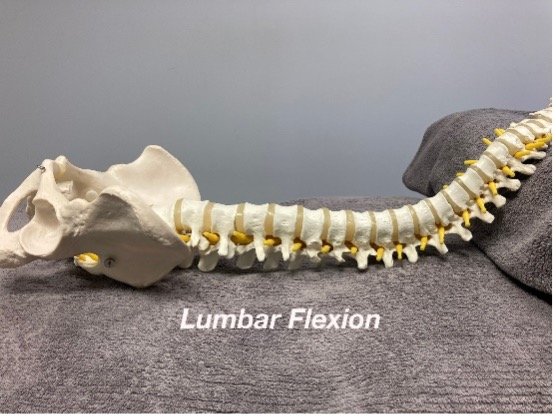Core stability: is it your body’s real achilles heel?
Power up your core stability with these three simple core stability exercises
The word ‘core’ gets thrown around a lot these days. Whether you’re “working out your core”, or your trainer reminds you to “engage your core!” – it’s a familiar term in the gym. Physically, your core sits at your centre. It’s the complex series of muscles that comprise your trunk – abdominals, obliques, diaphragm, and your pelvic floor to name a few. Your core is essential in providing balance and stability to everything you do – even breathing!
Yet, the core can be the achilles heel of your physical fitness. Even if you do plenty of sit-ups and crunches, you can have weak core stability. And you can still suffer pain. So, how can you tell the difference between having a strong core and a stable core? Our Pagewood Chiropractor, Dr Adam Logan explains.
What is core stability?
Core stability is the ability of your core musculature to create stiffness around the pelvis and torso to maintain a neutral spine. The muscles need to be firing together at the right time with enough endurance to create stability. Core stability differs from strength. Strength is all about force production. It’s how much you can push or pull around. Therefore, even if you are strong enough to do hundreds of sit-ups, you may not have good core stability.
There are two major stabilising systems of the core. There is the intrinsic core and extrinsic core musculature. The intrinsic core is made up of endurance muscles that attach directly to the spine and pelvis, providing joint stability and control.
The intrinsic core is made up of:
Transversus abdominus
Internal abdominal oblique
Diaphragm
Lumbar extensors (erector spinae & multifidus)
Pelvic floor muscles
The extrinsic core consists of muscles that generate movement and provide global stability.
The extrinsic core is made up of:
External abdominal oblique
Rectus abdominus
Quadratus Lumborum
Gluteal muscles
Hamstrings
Adductors
Latissimus dorsi
How do you engage your core?
Engaging or bracing the core is more than just drawing our belly button in or tensing our abs. It involves activating all the intrinsic muscles to create a 360° area of stiffness around our spine. The intrinsic muscles are the best at creating intra-abdominal pressure (IAP), a cylindrical area of pressure created within the abdominal region. Try thinking of IAP as an unopened can of soft drink. If you were to step on a full, unopened can of soft drink – it would stay strong. However, if you were to step on an empty can - it would quickly crumble. The pressure inside the can is what gives it strength and stability. As such, you should brace your own core anytime you are under a barbell, playing sport – or even picking up your children.
Creating core stability is also important to maintain a neutral spine. A neutral spine is a small range of motion or zone around the neutral posture. When we load the body (such as squatting) in this neutral zone, it allows the load to be equally distributed over the discs and vertebrae. Loading the spine outside of the neutral zone can lead to uneven force distribution and can increase the risk of injury.
Bracing also allows for more efficient force transfer through the limbs. You can see weightlifters brace when they lift. And you can hear tennis player brace (that’s the grunt!) as they hit the ball. Imagine throwing a punch without stiffening the trunk. Your ribcage would move excessively, and the punch wouldn’t be fast or forceful. Instead, if you stiffen your core and prevent excessive movement of the ribcage – bam! You will achieve the full expression of a punch.
If you don’t have sufficient IAP and have muscle imbalances in your core, compensation mechanisms begin to take place. Typically, this means that larger muscles (i.e. extrinsic muscles) ‘take over’ the role as a stabiliser in a less efficient way. This makes them more susceptible to pain and injury as these muscles are sacrificing their primary function to produce force and movement.
Core stability exercises
Core stability exercises can help reduce injuries in your back, groin, hamstring and knee. Here’s some recommended exercises (with video demonstrations) you can do to improve your core stability.
1. Bracing
First, practice improving your awareness of your stabilising muscles and the position of your spine. Aim to feel all your muscles activate as you brace your core.
Here’s how to brace properly:
Lie on the ground on your back
Tucking the chin in and bring your ribs down
Find the neutral spine by arching your lower back, then flatten it and find the position in between. Your hand should be able to fit snuggly under your lower back without being able to go all the way through.
Place your hands around your side, with the top of your hands at the bottom of your ribs.
Activate all the muscles of the intrinsic core, use the cue ‘brace for a punch’. You should feel all the muscles around your abdomen contract under your hands. Improper bracing will only activate the rectus abdominus, our six-pack muscle.
Hold for 10-20 seconds
2. Core stability exercises
Next, integrate bracing into your movements to build strength and endurance of these stabilising muscles. It has been shown that lower threshold exercises are best for activating intrinsic muscles.
When it comes to core stability training, variety matters. Here’s some excellent ones to do:
· Deadbugs
· Birddogs
· Side plank
· Pallof press
You could also do a beast crawl or suitcase carries.
3. Functional movements
Once you can control and maintain stability in your core, it is time to incorporate this into functional movements. To fully grasp core stability, you need to be able to perform exercises that our daily life demands of us – like picking up a parcel off the front step correctly.
Exercises to power functional movement include:
Goblet squat
· Front squat
You could also do a barbell squat, deadlift or an overhead press.
How can core stability help your spinal health?
Core stability is very different to just having a good six-pack. It’s about your core having the correct timing and coordination to support optimal physical function every day. Core stability helps reduce injury and increases your performance. It’s an essential part of looking after yourself and these core stability exercises can help you achieve that. If you have any questions about this blog, please speak to your chiropractor.
Pain relief from core-related weakness at Sydney Spine
At Sydney Spine and Sports Clinic, we put you first. We believe in offering ethical chiropractic care that enables you to make informed and educated choices about your health. If you are suffering pain in your back, groin, hamstring, or knee – weak core stability might be holding you back from leading the life you want. Get an individual assessment and injury recovery plan when you make an appointment with one of our chiropractors.






